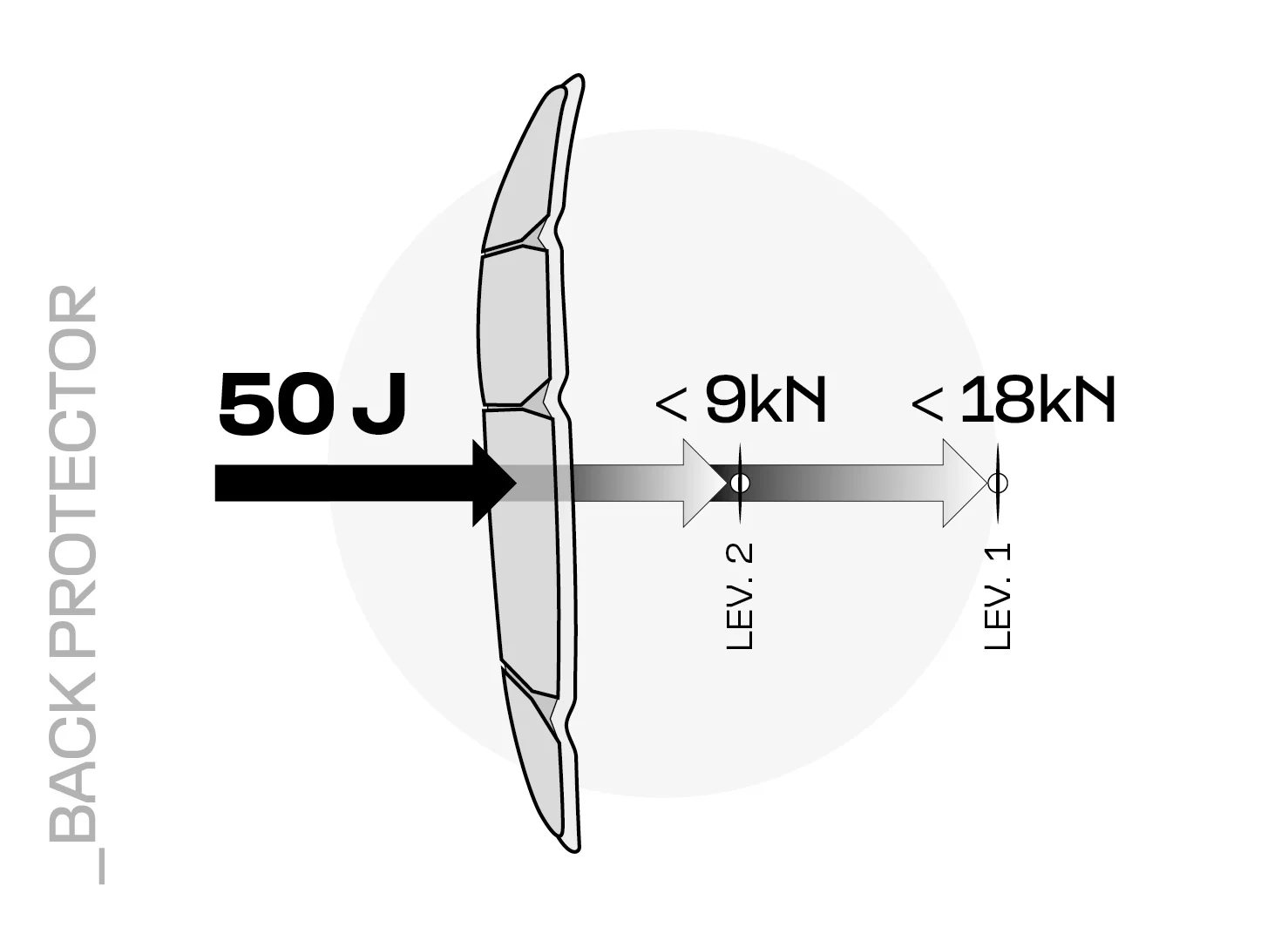Created in the late 1970s to protect riders in world championship motorcycle racing, the back protector established itself as an essential protector in many dynamic sports in the space of a few years, eventually becoming as important as a helmet. After its debut in motorcycle racing, the back protector was adopted as an irreplaceable safety device in mountain biking and skiing.
Over the years, the ski back protector has been developed to become increasingly specific for its intended purpose, moving it away from the original product made for bikes. Today, various ski back protector technologies are available to meet different needs, in terms of both the protector itself and of wearability and ergonomics.
The European standard that governs certifications for the level of protection offered by a back or other protector is EN1621. In particular, back protectors come under part 2 of this standard – EN1621/2 (N.B. the 2 doesn’t mean level 2 protection, but that we’re talking specifically about a back protector and not, for example, a knee pad, indicated by the number 1). So if you’re thinking about purchasing a ski back protector, the first thing to check is that the model you’re interested in is certified according to this standard, which also happens to be the one that governs motorcycle back protectors.

The next step is to figure out whether it’s a level 1 or level 2 protector, where 2 is the higher level of protection. It’s the force transmitted to the back on impact that determines the level of certification. Homologation tests involve a series of impact tests with impact force with energy of 50 J. To obtain level 1 certification, a protector must be able to transmit an average force (from the values measured in the various tests) of 18 kN or lower to the body, while no individual impact value can exceed 24 kN. A level 2 back protector must transmit an average force of no more than 9 kN, with no single impact greater than 12 kN.
Dainese has differentiated its offering so as to offer different models of back protector for both levels of protection:
Flexagon is made up of overlapping layers of Crash Absorb® Memory Retention Foam, with an extremely high capacity to absorb impacts. The two layers of Crash Absorb® up the level when it comes to safety – the potential for these to ‘slide’ relative to each other allows for greater dissipation of impact force. Flexagon’s protective layers are made up of tessellating hexagons that can flex and slide on all axes of movement, for maximum freedom in performing every action. The profile of the Flexagon back protector is also designed to provide a large area of coverage.
Auxagon is instead Dainese’s level 1 ski back protector, more flexible, lighter and breathable. Its design is inspired by auxetics, shapes found in nature able to respond to stress in a unique way. If an auxetic protector is stretched in one direction, the response will be the same in the other directions. So if the material is compressed in a given direction at a given point, it will compress in all directions, stiffening and gaining structural strength in the area of impact. Conversely, if the material is extended in one direction, it will extend in all directions. In this way, protectors designed using auxetics achieve an excellent balance of safety and flexibility, since they can adapt their structure in accordance with the stress to which they’re subjected.
Each of the two back protector models is available in two versions in order to meet different needs. The back protector with straps is the most traditional and essential. It’s the one with the greatest capacity to adapt to different builds, since all you need to do is adjust the strap lengths. It comes with adjustable lumbar band that wraps around the waist in any case, to hold it securely on the body. The Auxagon model is in any case available in two different lengths (G1 shorter and G2 longer) so that you can find the perfect one for your height.
The Waistcoat version incorporates the back protector into a vest that’s imperceptible and breathable. This is of course available in different sizes for both men and women. There is also an adjustable Velcro lumbar band on these models, to be worn snug but not tight, so that the back protector stays in place but isn’t annoying and doesn’t restrict torso movement.
While Junction Wave is only available with straps, Flexagon and Auxagon are available in both versions, to meet different needs.
Whether you decide to prioritize impact absorption or flexibility, whether you choose a model with straps or a vest, the back protector offers safety, for the world of skiing too, without which it’s hard to have the confidence you need to express your full potential and raise your game, regardless of your current skiing level.